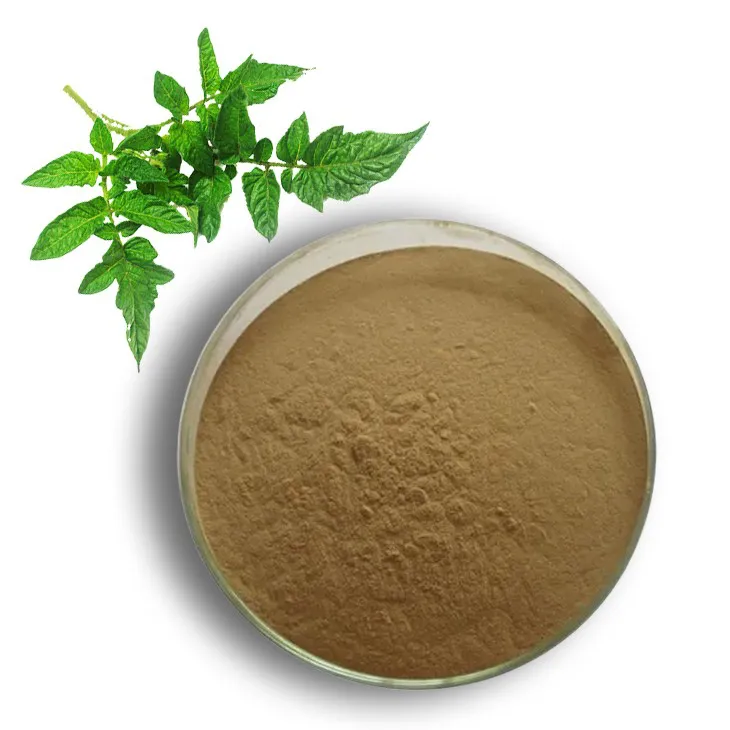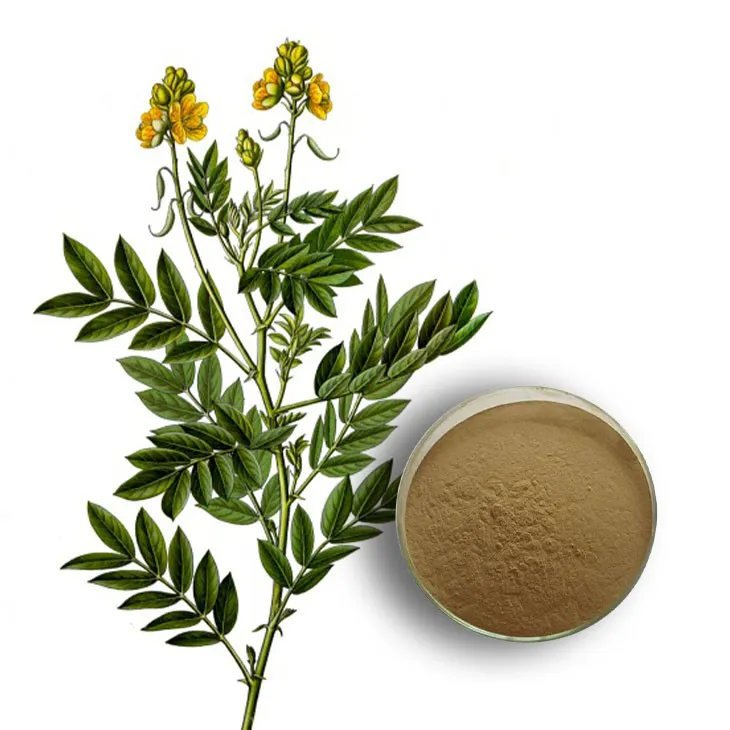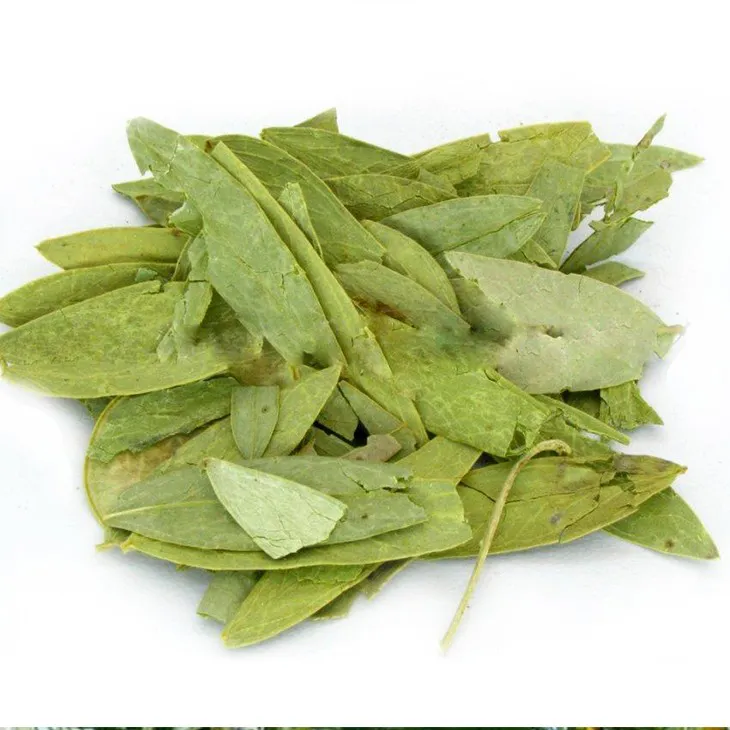- 0086-571-85302990
- sales@greenskybio.com
Senna Leaf Extract: From Leaves to Extraction.
2024-11-13

1. Introduction to Senna Leaves
Senna leaves are an important part of a traditional medicinal plant. These leaves are native to certain regions and have been used for centuries in traditional medicine systems. The plant itself has unique characteristics, with its leaves being of particular significance.
Senna plants are often recognized for their distinct appearance. The leaves are usually green and have a characteristic shape and texture. They grow in specific environmental conditions, which can influence their chemical composition. For example, factors such as soil type, climate, and altitude can all play a role in determining the quality and potency of the senna leaves.

2. The Extraction Process
The extraction of Senna Leaf Extract is a complex and meticulous process.
2.1 Harvesting
The first step in obtaining Senna Leaf Extract is the proper harvesting of the leaves. This needs to be done at the right time to ensure the optimal quality of the leaves. Harvesting too early or too late can result in leaves with lower concentrations of active ingredients. Skilled harvesters are often required to identify the appropriate stage of growth for harvesting.
2.2 Drying
Once harvested, the senna leaves need to be dried. Drying is crucial as it helps to preserve the leaves and prevent the growth of mold or other microorganisms. There are different methods of drying, such as air - drying and using drying machines. Air - drying is a more traditional method, which may take longer but can preserve some of the natural properties of the leaves better. Drying machines, on the other hand, can provide a more controlled drying environment and are often faster.
2.3 Grinding
After drying, the senna leaves are ground into a fine powder. This increases the surface area of the leaves, which is important for the subsequent extraction process. The grinding process needs to be carefully controlled to ensure that the powder has a consistent particle size. A uniform particle size helps in better extraction efficiency as it allows for more even contact between the solvent and the leaf material.
2.4 Extraction
There are various methods for extracting the active ingredients from the ground senna leaf powder. One common method is solvent extraction. Solvents such as ethanol or water can be used. Ethanol extraction is often preferred as it can dissolve a wide range of active ingredients. The solvent is mixed with the powder, and the mixture is left to stand for a certain period of time to allow the active ingredients to dissolve into the solvent. Then, through filtration and other separation techniques, the extract is obtained.

3. Active Ingredients in Senna Leaf Extract
Senna leaf extract contains several important active ingredients.
- Sennosides: These are the main active components responsible for the laxative effect of senna leaf extract. Sennosides stimulate the muscles in the intestines, promoting intestinal peristalsis. This helps in moving the stool through the digestive tract more efficiently, relieving constipation.
- Flavonoids: Flavonoids in senna leaf extract have antioxidant properties. They can help in protecting the body's cells from oxidative damage caused by free radicals. These flavonoids may also play a role in reducing inflammation in the body.
- Anthraquinones: Anthraquinones are another group of compounds present in the extract. They contribute to the overall pharmacological activity of the senna leaf extract, working in conjunction with sennosides to affect the intestinal function.

4. Applications in Medicine and Health
The senna leaf extract has a wide range of applications in the field of medicine and health.
- Treatment of Constipation: As mentioned earlier, the sennosides in the extract stimulate intestinal peristalsis, making it an effective treatment for constipation. It can be used in both acute and chronic cases of constipation. However, it should be used under the guidance of a healthcare professional as over - use can lead to some side effects.
- Pre - operative Bowel Preparation: In some surgical procedures, it is necessary to clean the bowel before the operation. Senna leaf extract can be used as part of the bowel preparation regimen. It helps in emptying the bowel, reducing the risk of complications during surgery.
- Digestive Aid: It can also be used as a general digestive aid. By promoting normal intestinal movement, it can improve digestion and prevent problems such as indigestion and bloating.
5. Applications in Cosmetics
With the increasing trend towards natural products in the cosmetics industry, senna leaf extract is also finding its place.
- Skin Cleansing: The extract can be used in skin - cleansing products. Its ability to promote the movement of substances in the body can be translated to the skin. It can help in removing impurities from the skin, leaving it clean and refreshed.
- Anti - inflammatory Properties: The flavonoids in the extract with their anti - inflammatory properties can be beneficial for skin conditions such as acne and eczema. It can help in reducing redness and inflammation on the skin.
- Hair Care: In hair care products, senna leaf extract can be used to improve the condition of the scalp. It can help in maintaining a healthy scalp environment, which is essential for strong and healthy hair growth.
6. Applications in Dietary Supplements
Senna leaf extract is also being explored in the field of dietary supplements.
- Digestive Health Supplements: It can be included in digestive health supplements due to its role in promoting intestinal peristalsis. These supplements can be beneficial for people with slow digestion or irregular bowel movements.
- Antioxidant Supplements: Given the presence of flavonoids with antioxidant properties, senna leaf extract can be part of antioxidant - rich dietary supplements. These supplements can help in protecting the body from oxidative stress.
7. Safety and Precautions
While senna leaf extract has many beneficial applications, it is important to be aware of safety and precautions.
- Side Effects: Over - use of senna leaf extract can lead to side effects such as abdominal cramps, diarrhea, and electrolyte imbalance. It is crucial to follow the recommended dosage when using products containing the extract.
- Contraindications: Senna leaf extract is not suitable for everyone. People with certain medical conditions such as intestinal obstruction, inflammatory bowel disease, or kidney problems should avoid using it. Pregnant and breastfeeding women should also avoid using senna leaf extract as it may have potential risks to the fetus or the baby.
- Quality Control: When using products containing senna leaf extract, it is important to ensure that they are from a reliable source. Quality control is essential to ensure that the extract is pure and free from contaminants.
8. Conclusion
Senna leaf extract is a versatile substance that has been derived from senna leaves through a complex extraction process. It contains active ingredients that make it valuable in various fields such as medicine, cosmetics, and dietary supplements. However, proper safety measures need to be taken when using products containing this extract to ensure its beneficial effects are maximized while minimizing potential risks. As research continues, more potential applications and properties of senna leaf extract may be discovered, further highlighting its importance in the natural products industry.
FAQ:
What are the main active ingredients in senna leaf extract?
The main active ingredients in senna leaf extract are sennosides. These sennosides are responsible for the laxative effect of the extract by stimulating the intestinal muscles and promoting peristalsis.
How is the senna leaf extraction process carried out?
The extraction process typically involves several steps. First, the senna leaves are carefully collected and dried. Then, they are usually subjected to solvent extraction, where a suitable solvent is used to dissolve the active ingredients from the leaves. After that, the extract is purified and concentrated to obtain the final senna leaf extract. Different manufacturers may use slightly different techniques and solvents based on their requirements and quality standards.
Are there any side effects of using senna leaf extract?
Yes, there can be side effects. Prolonged or excessive use of senna leaf extract may lead to abdominal cramps, diarrhea, and electrolyte imbalance. It can also cause dependence on laxatives if used inappropriately for a long time. People with certain medical conditions such as intestinal obstruction, inflammatory bowel disease, or pregnant and breastfeeding women should avoid using it without medical advice.
How is senna leaf extract used in the field of cosmetics?
In the field of cosmetics, senna leaf extract is sometimes used for its potential skin - purifying and detoxifying properties. It may be included in products like facial masks or cleansers. The extract is believed to help remove toxins from the skin, improve skin tone, and give a healthy glow. However, its use in cosmetics also needs to comply with relevant safety regulations to ensure that it does not cause any adverse skin reactions.
What are the quality control measures for senna leaf extract?
Quality control measures for senna leaf extract include ensuring the proper identification and sourcing of senna leaves. During the extraction process, parameters such as solvent quality, extraction time, and temperature are closely monitored. The final extract is tested for the content of active ingredients, purity, and absence of contaminants such as heavy metals and pesticides. It must also meet the relevant pharmacopoeia or industry standards for safety and efficacy.
Related literature
- The Pharmacological and Medicinal Properties of Senna Leaf Extract"
- "Senna Leaf Extract: Extraction Techniques and Quality Assurance"
- "Applications of Senna Leaf Extract in Modern Medicine and Cosmetics"
- ▶ Hesperidin
- ▶ Citrus Bioflavonoids
- ▶ Plant Extract
- ▶ lycopene
- ▶ Diosmin
- ▶ Grape seed extract
- ▶ Sea buckthorn Juice Powder
- ▶ Fruit Juice Powder
- ▶ Hops Extract
- ▶ Artichoke Extract
- ▶ Mushroom extract
- ▶ Astaxanthin
- ▶ Green Tea Extract
- ▶ Curcumin
- ▶ Horse Chestnut Extract
- ▶ Other Product
- ▶ Boswellia Serrata Extract
- ▶ Resveratrol
- ▶ Marigold Extract
- ▶ Grape Leaf Extract
- ▶ New Product
- ▶ Aminolevulinic acid
- ▶ Cranberry Extract
- ▶ Red Yeast Rice
- ▶ Red Wine Extract
-
Oyster Mushroom Extract Powder
2024-11-13
-
Pomegranate Extract
2024-11-13
-
Alfalfa Meal
2024-11-13
-
Oat Straw Extract Powder
2024-11-13
-
Fenugreek Extract Powder
2024-11-13
-
Aguaje Extract
2024-11-13
-
Pueraria Lobata Extract
2024-11-13
-
Medicinal Marshmallow Extract
2024-11-13
-
Artichoke Leaf Extract
2024-11-13
-
Almond Extract Powder
2024-11-13





















